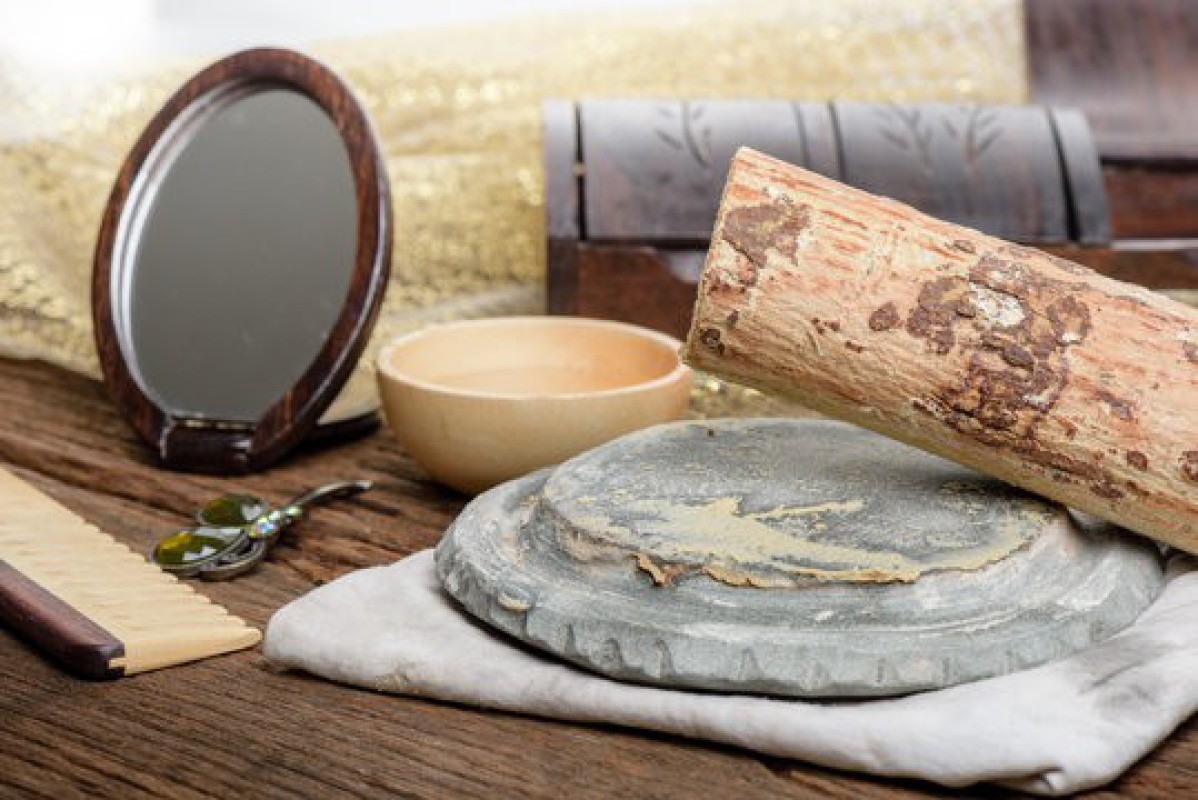Myanmar’s beautiful Anyar face with Thanakha

508

Thiri Khit Oo (NP News) - April 12
Tree barks are useful for medicines and cosmetics. Among those useful tree barks, Thanakha is the easiest to use without any technical steps to be cosmetics. In Myanmar ancient time, Thanakha is widely use to protect their skins from sunburns due to the tropical monsoon climates.
Bamar ethnics wear Thanakha in various shapes in yellowish-white marks in attractive designs and mostly common form is circular shape on cheeks and nose. Some pattern in the shape of leaf, flower etc. as their favorite using brush or by hands. Some also apply on the whole body especially neck, hands, arms and legs. Wearing Thanakha on face with patterns making perfect smiles which is the symbol of Bamar ethnic people showing their honest and pure.
Thanakha is the most appropriate to use as cosmetics for mentioned weather of Myanmar.
Most people wear Thanakha as rural style since weather is hotter in areas such as regions of Sagaing, Mandalay, Yangon and Bagan. In addition, the way to wear Thanakha is too easy just by grinding the Thanakha bark on the smooth flat circular stone slab adding a little amount of water to make a paste and it is ready to apply on the skin.
Thanakha has potency of healing skin inflammation, as anti-acne, moisturizing with highly antioxidant, providing Vitamin E, protecting skin from UV rays, free radicals and polluted air. In addition, Thanakha can sooth the skin, protect the skin as a layer for sunburns and its fragrance can give relax and freshness but also its anti-aging effects can provide youthful skin since it has flourish nourish and natural ingredients. It is more effective to apply on skin after taking a bath or washing face at night calming the skin. Therefore, all type of ages for unisex wear Thanakha.
Thanakhas were naturally sold as a shot log or small bark in the domestic market. Nowadays, Thanakha were modernized as ready to wear cosmetics in paste, powder, puff, liquid, serum, gel etc. with attractive packaging.
Myanmar literature stated as Thanakha were offering with bonfire to Buddha making a culture in Bagan era.
The culture was handed over from generations to generations and Thanakha Grinding Festival is held in urban areas till todays in some parts of Myanmar on 1 April of Thingyan Festival (Water Festival). Sometimes, the Thanakha Grinding Festival merges with Thingyan Festival.
The Thanakha plants mostly thrives in central dry zone of Myanmar such areas of Ayadaw, Pakokku, Yesagyo, Myaing, Shwebo, Budalin, Yinmabin, Monywa, Myinmu and Pauk Townships. People cultivate commercially plantation of Thanakha trees in mentioned townships more than 300,000 acres. Thanaka trees grow rapidly, even after cutting branches, enabling new plantations.
Todays, the government is also processing to get a place in the international markets trading ready-to-apply Thanakha products and plans are underway to produce finished products of Thanakha to exports to ASEAN countries of Philippines, Indonesia, and Malaysia as first step. In addition, the relevant ministries and Myanmar Thanakha Growers and Exporters Association are collaborating and making efforts on Myanmar Thanakha to be listed on the United Nations Educational, Scientific, and Cultural Organization’s (UNESCO) Intangible Cultural Heritage List.
Data references – Ministry of Information (MOI)
Global New Light of Myanmar Tourism Myanmar Shecodes